Since I had to go to work (no vacations for this working boy), the next time I got to see it was right after the 6 pm Holy Wednesday (March 19th, 2008) Mass at the Cathedral, when it had been relocated by Mrs. Regala’s carroza crew to the Patio (a.k.a. Plaza or esplanade) right in front of the Cathedral, side-by-side with the other participating tableaux and images. And it looked like this.
In a quick exercise of “Spot the Differences,” it turns out that Dardo de la Cruz, the Vecin Workshop’s regular carroza decorator, had taken the initiative, when no one was looking and without even telling me, to add long green vine-like growths to each floral fixture, greatly enhancing the ensemble’s overall appearance with a "Hanging Gardens of Babylon" look.
I must say, if all artists, artisans, and craftsmen were as proactive and high-initiative as Dardo (and his colleagues at the Vecin Workshop), then we harassed Holy Week processional tableau proponents could sleep better before and during Holy Week.I then walk around the carroza and check out specific aspects of the group. At an angle at the rear side right, here’s how Christ and John appear to a devotee on the ground.
The benefits of having larger-than-life glass eyes for life-sized images that are to sit or stand high up on the carroza are clearly evident here – Christ and John appear alert and wide-awake despite the darkness of the night sky (and thanks to liberal spotlighting).
Peter (side to the camera) and Christ appear this way on the other side.
Our crafty friend Judas, now with his red velvet bag (stuffed with newspaper – I’d rather keep the thirty pieces of silver in my own pocket) in hand (it was misplaced the previous Saturday, so it was just put in place subsequently) cannot be missed.
A right side view not only reveals the favorable staging effect of having a three-tiered floor, but also gives assurance that the Apostles are spaced comfortably and appropriately.
And a front-quarter view provides evidence that the orbs seem to drawn avidly to this tableau (or is it just to Judas?).
This newbie karo is number fourteen in the Holy Wednesday line-up, as evidenced by both the program (unfortunately difficult to clearly reproduce due to the design and small typeface)
as well as by the thoughtfully-provided pink sheet that they affixed to the front of the carroza.
The listing in the program lists the owner as a certain “Leonardo N. Cloma.” In fact, he’s our Dad, and had been dead for the past couple of decades. In reality, we commissioned this processional tableau in his memory, and the listing in the program should have indicated “Bilang Ala-ala kay Leonardo N. Cloma (4 Hulyo 1934 – 15 Abril 1986)”, but it seems that space constraints in the printed program forced an edit.
Which is why a few people must have been wondering where the owner Mr. Leonardo N. Cloma was. Normally, I might have been tempted to respond, “He’s sorry that he can’t be with us right now, as he’s been under six feet of soil for the past twenty-two years.” But it being Holy Week, I had to patiently explain, in a bit of a roundabout way, that he was simply the dedicatee of the tableau, and no, my name is not “Leonardo” too.We did, however, indicate the proper “in memoriam” credit to our Dad in the stampita that we produced, which not only had English and Tagalog prayers for meditating on this Fifth Mystery of Light (or First Station of the New Way of the Cross) but also a photo of the three figures at the head of the table (edited and enhanced from one of the hundreds of photos that I had taken when the images were dressed by Ramon Gutierrez a few weeks before -- see Part Three) for the cover.
Copies of this stampita were handed out to devotees all around as the procession made its way through the streets of Malolos Bayan.
As the procession got underway, occasional pauses allowed the devotee to take in various views of this massive tableau.
and in the process also allowed one to observe that kids
and slightly older adherents
engaged in discourse, presumably about this new, never-seen-before, processional scene.
Perhaps some of them were wondering how many truck batteries were needed to light up this yacht, since no discernible noise could be heard emitted by its trusty Elemax 2000 Super-Silent and Super-Compact generator, cradled in the depths of the chassis between the front and rear axles.
Holy Wednesday not being a holiday, crowds were noticeably thinner and the processional gangs rather sparse on this everning, which therefore allowed this first processional outing to serve as a comfortable trial run for all the participating tableaux especially for first-timers, including this Institution of the Eucharist.
The fewer number of devotees in the procession also meant that it completed its course in just about an hour and a half, allowing the gang some time to pose for a souvenir photo
by entering Mrs. Regala’s driveway in reverse – apparently the only feasible way to maneuver this gargantuan vehicle without causing too much damage to itself or others.
After a full seven minutes of pushing and pulling and huffing and puffing, it was finally ensconced within.
And thus ended a gloriously problem-free, even uneventful first processional excursion for this life-sized tableau of the Institution of the Eucharist at the Last Supper of Our Lord.
- - - - - - -
A couple of late afternoons later, on March 21st, 2008, it was time for the Good Friday processions. The sky was still light when the processional line-up assembled in the Malolos Cathedral Patio, including the smart-looking-even-in-daylight Institution of the Eucharist at the Last Supper of Our Lord tableau.
The procession started a few moments after 6 pm, and traversed the same route as the previous one two nights before. This meant that the two bamboo poles kept on hand to ensure that Christ’s potencias (the tallest point of the tableau) did not snag on any low-hanging wires or branches were not in very active use.
Except perhaps during that rather awkward passage through the Malolos Public Market, where there were a number of droopy overhead wires and cables, and where anyway the fruit and vegetable vendors on the night shift and their customers seemed oblivious to the religious proceedings that were going on right in front of them.
With substantially more people joining this evening’s procession than the previous one (and also, unfortunately, battalions more just watching on the sidelines, especially at major bends and intersections), the activity took longer to complete. (This also meant that we were able to give away more copies of our custom-made stampita to both procession-walkers and spectators than two nights ago.)We thus returned to the Cathedral Patio nearly two and a half hours since we departed, or about an hour longer than previously.
All the carrozas and their adherents were lined up to receive the blessing (with holy water -- more like a dousing, really) in the Patio, preceded by a short commentary on the scene or image being depicted. And of course yet another attribution of ownership by the broadcast commentator to the unfortunately indisposed Leonardo N. Cloma.
A few moments later, we coursed our way through the main Malolos rotunda around the Cathedral Patio,
then took a right at Santo Niño Street
towards Mrs. Regala’s driveway (a.k.a. this tableau's home base) at the far end.
But not before the requisite group photo of the Good Friday Gang of the Institution of the Eucharist,
this time including more of my family members, who had rushed to the vicinity of the Cathedral after barely completing a simultaneous procession (with our family’s Saint Martha) in the neighboring town.
And thus passed the first two processions and the first Holy Week of this formidable (if I may say so myself) tableau. Salamat sa Diyos! What I would give to ensure that all Holy Week processions were this uneventful and problem free.
Next: Mop-Up Operations and Subsequent Events.Originally published on 17 March 2009. All text and photos copyright ©2009 by Leo D Cloma. The moral right of Leo D Cloma to be identified as the author of this work has been asserted.





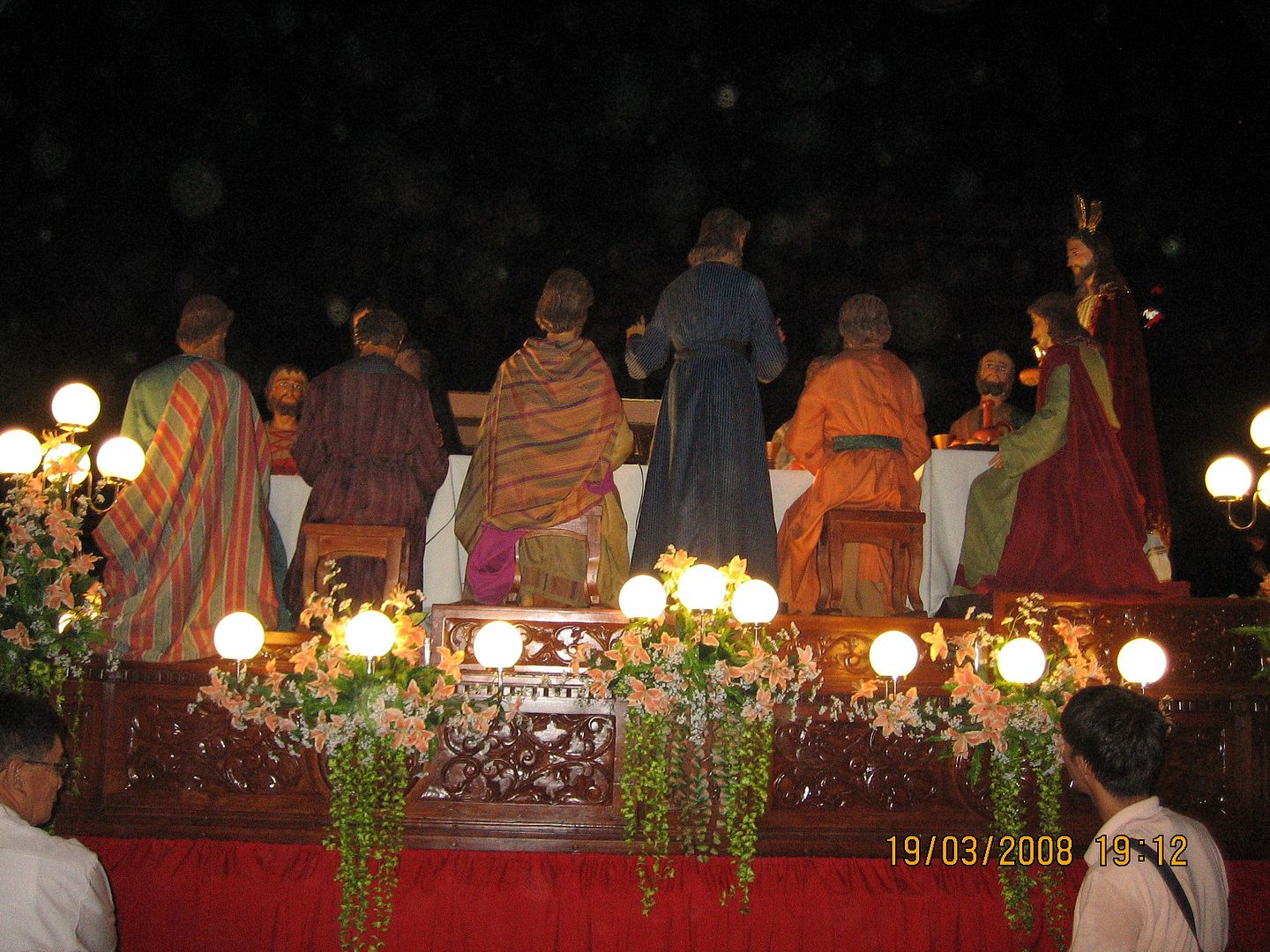
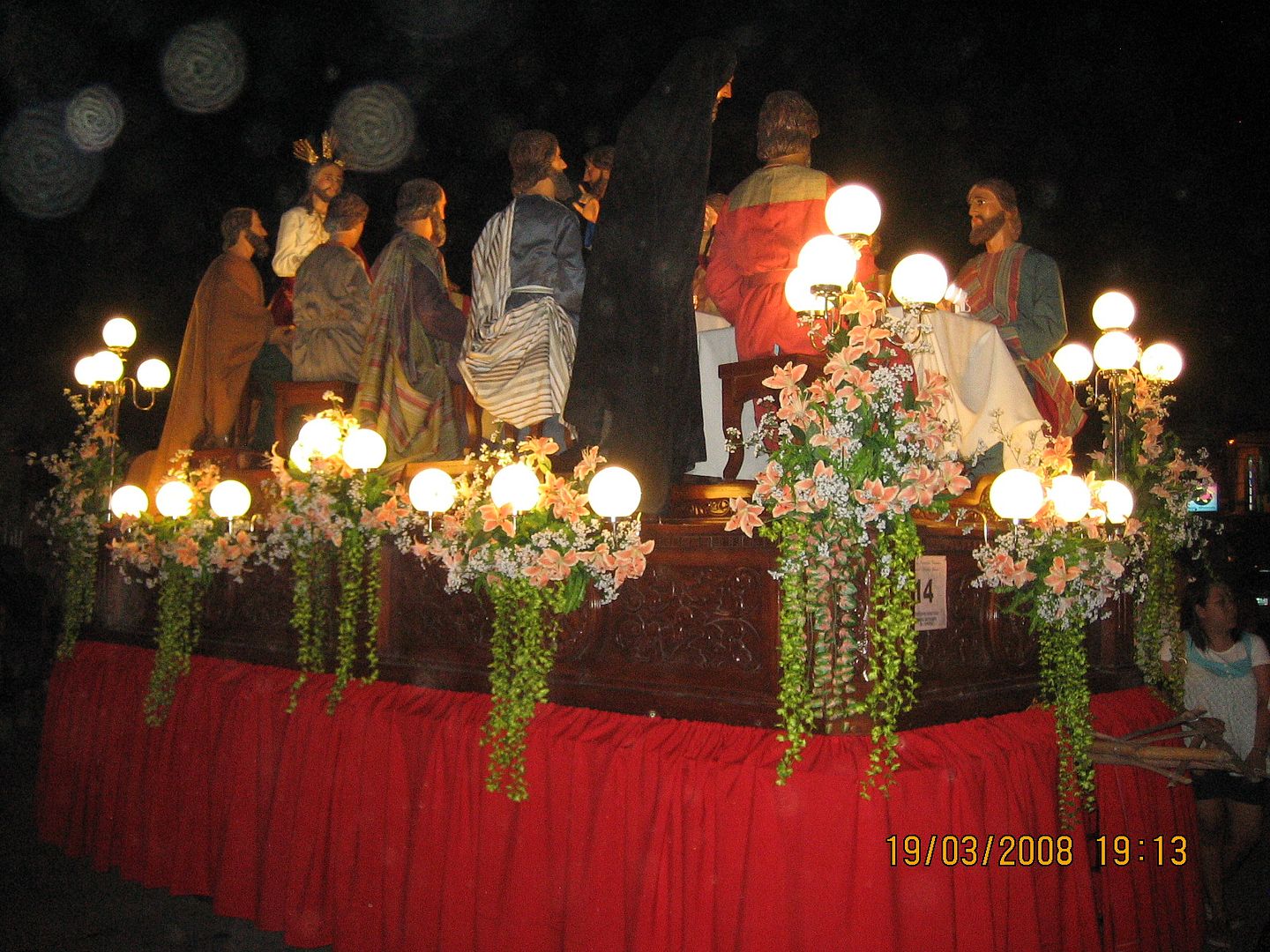

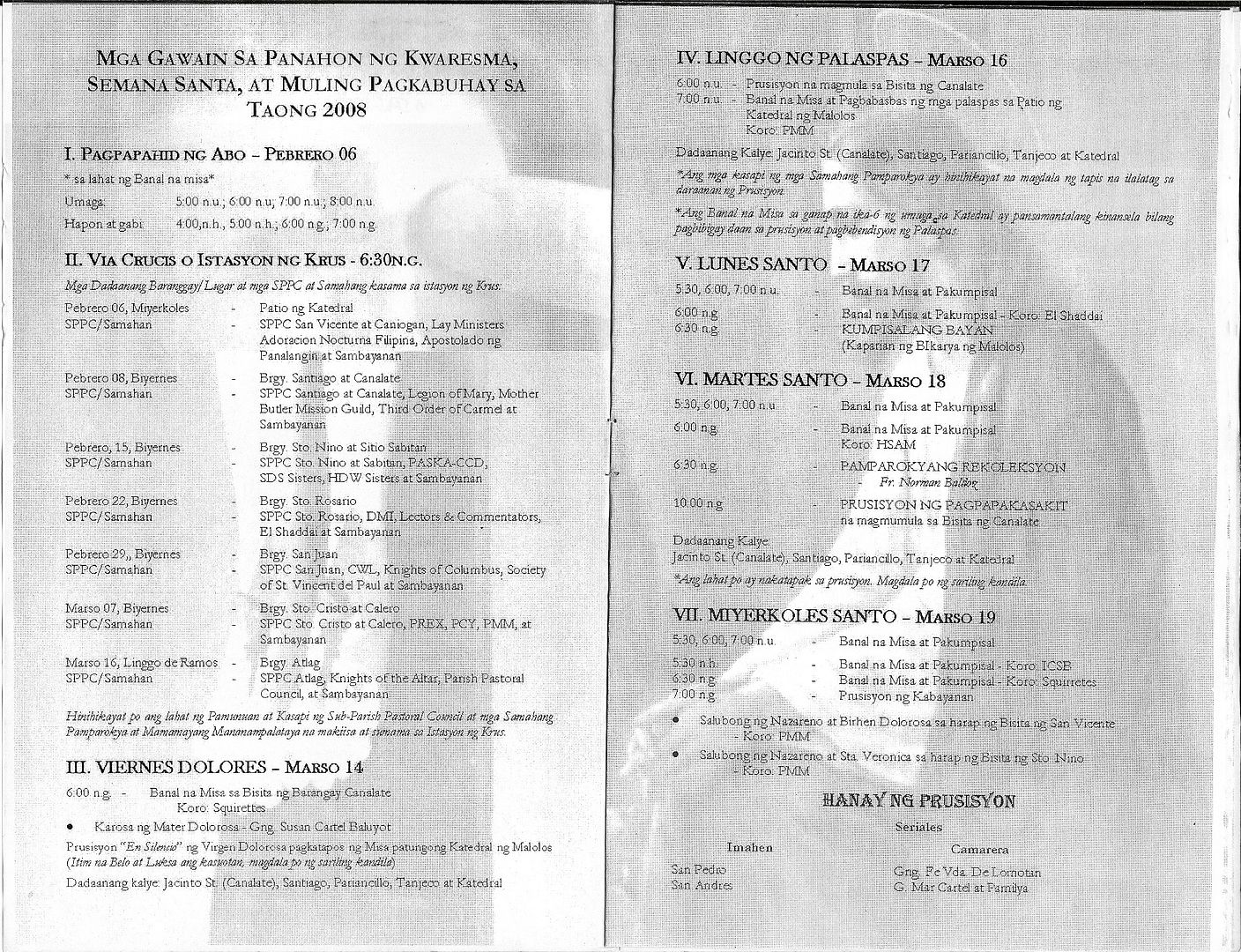
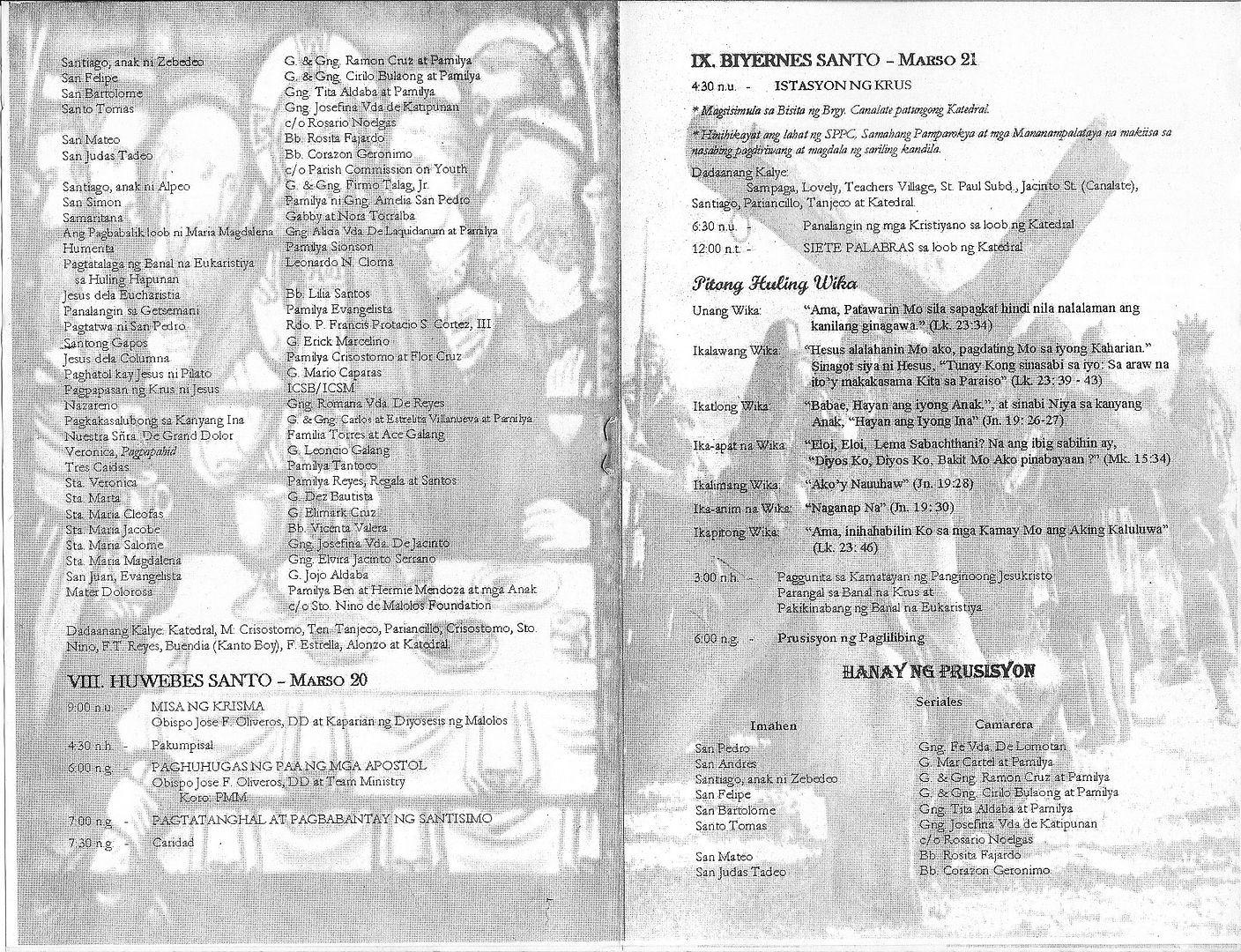
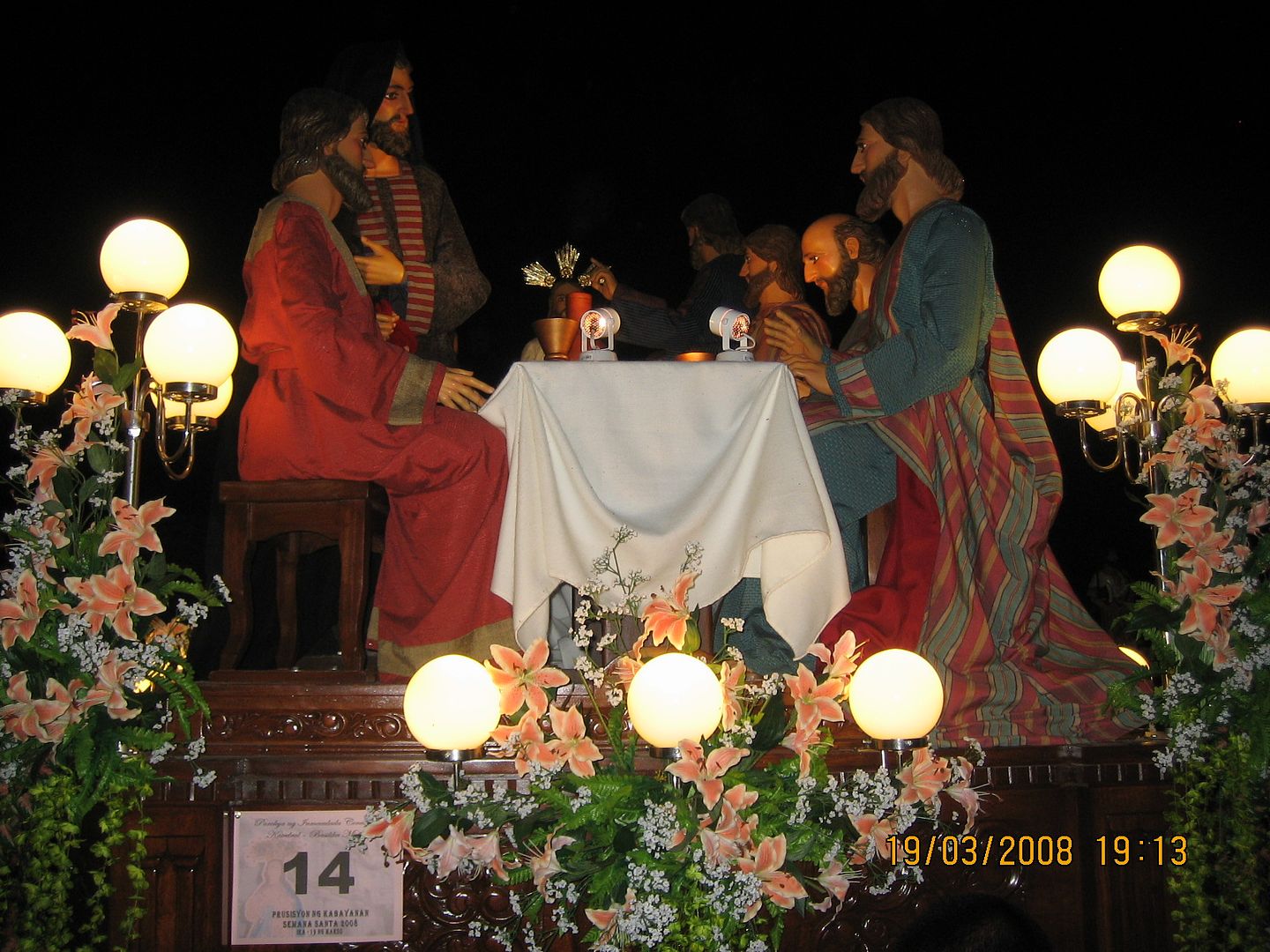
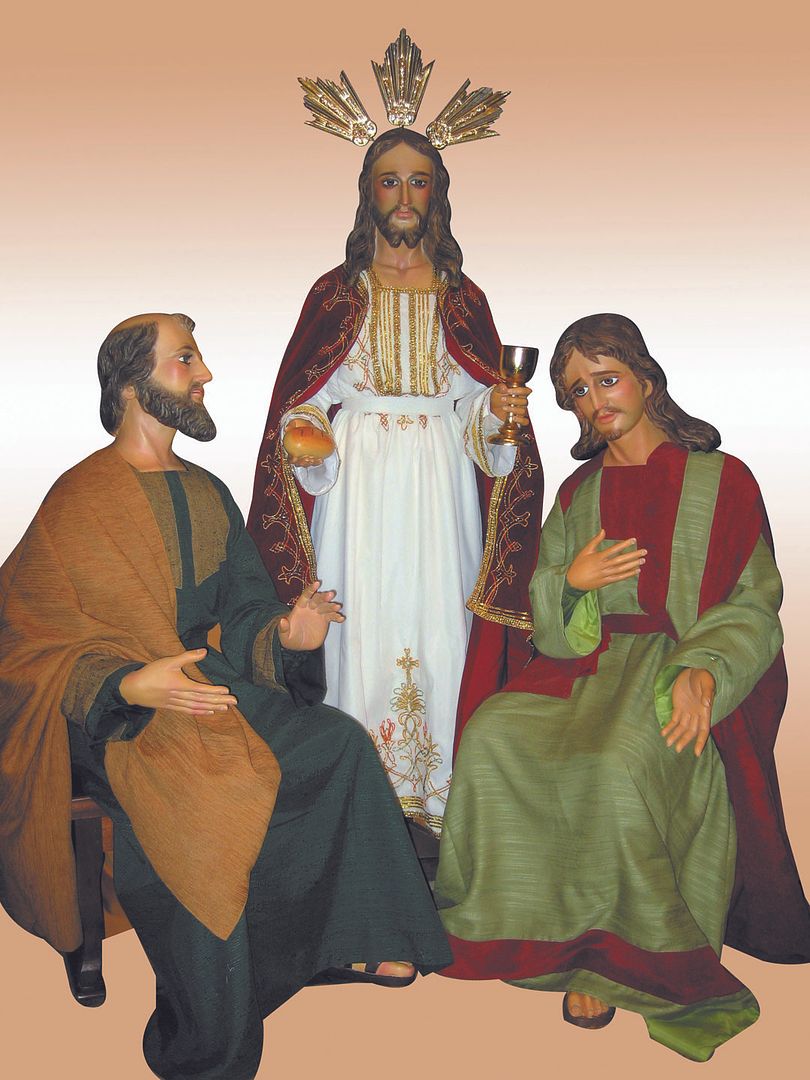
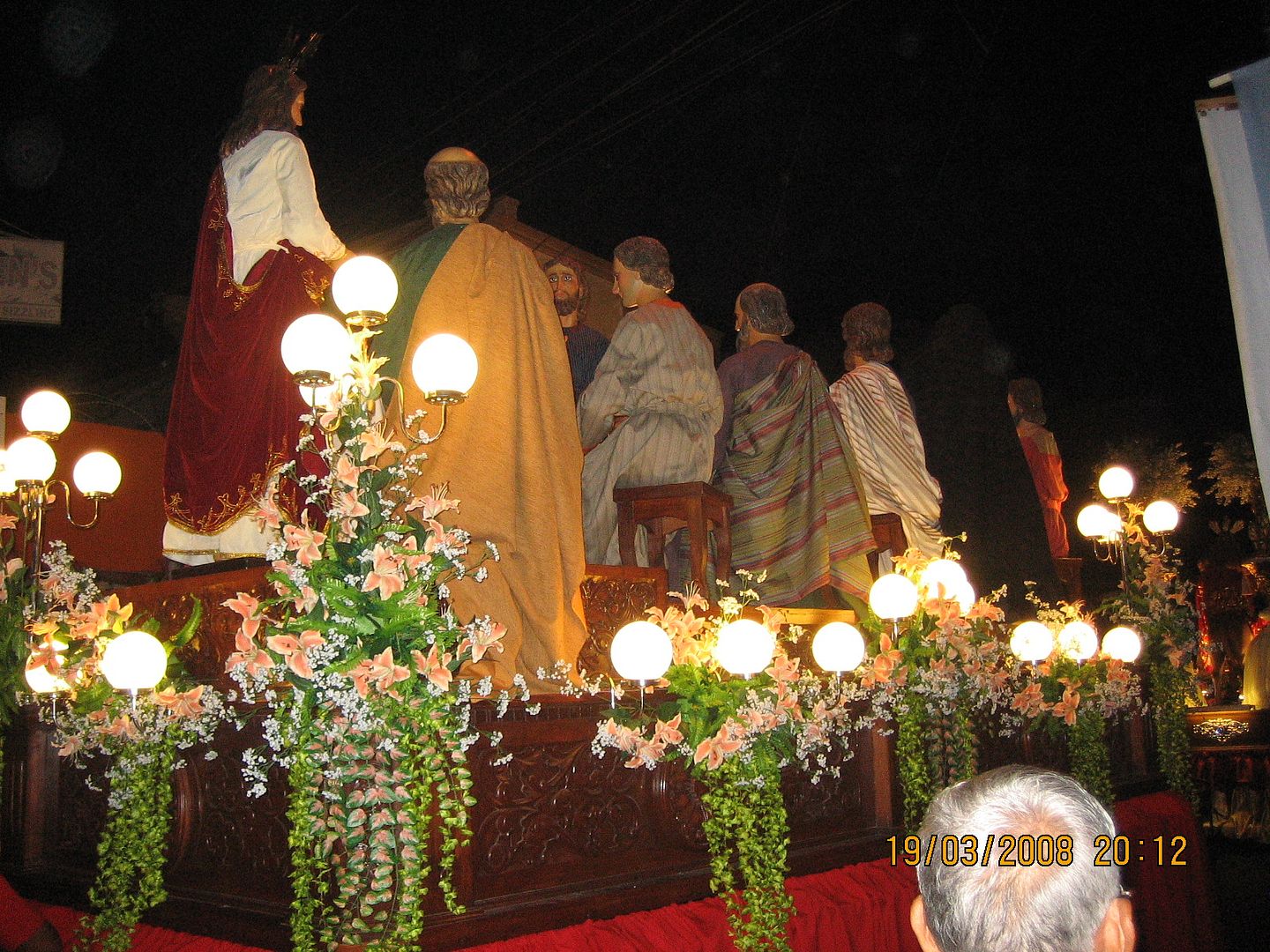
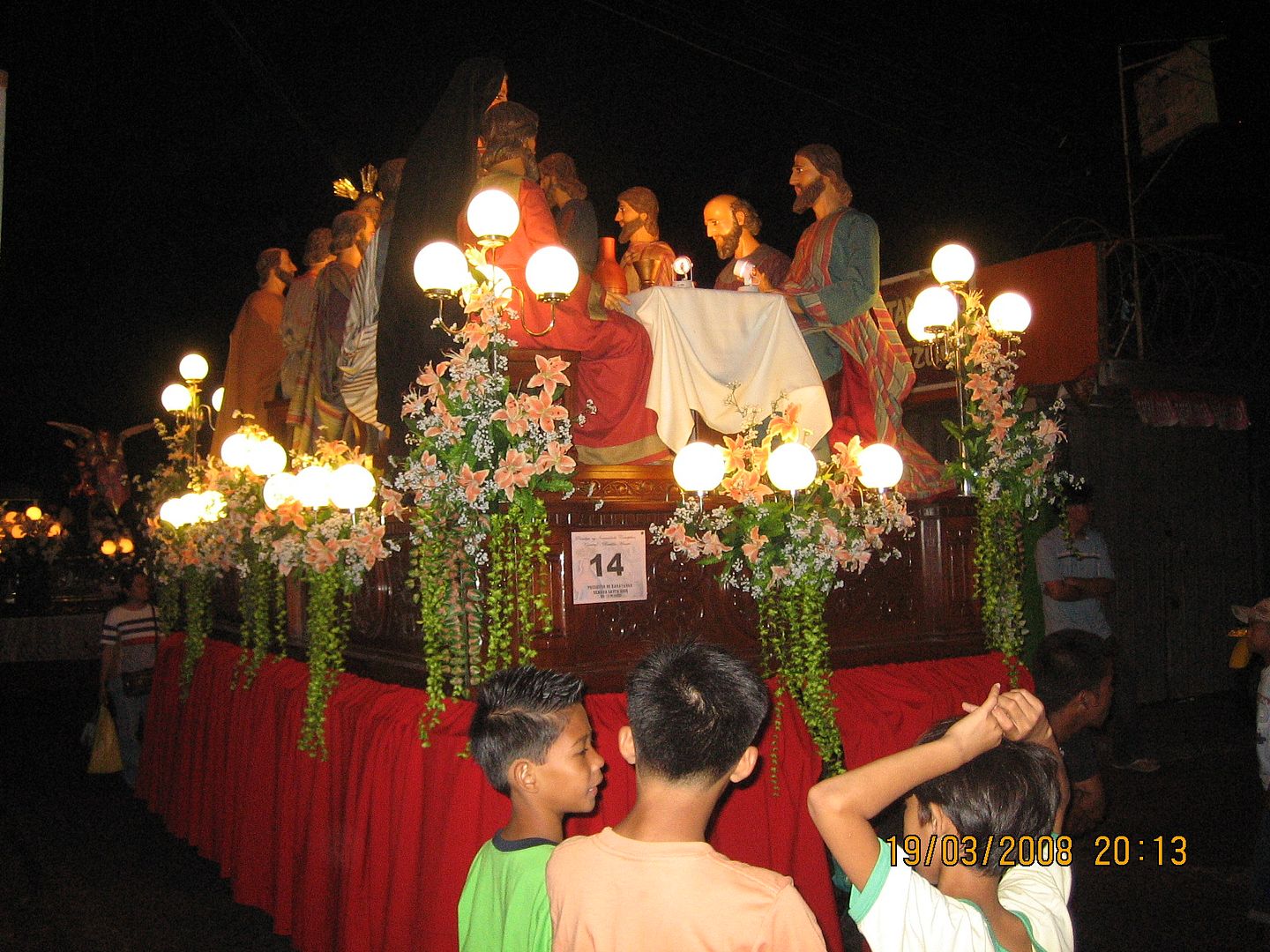



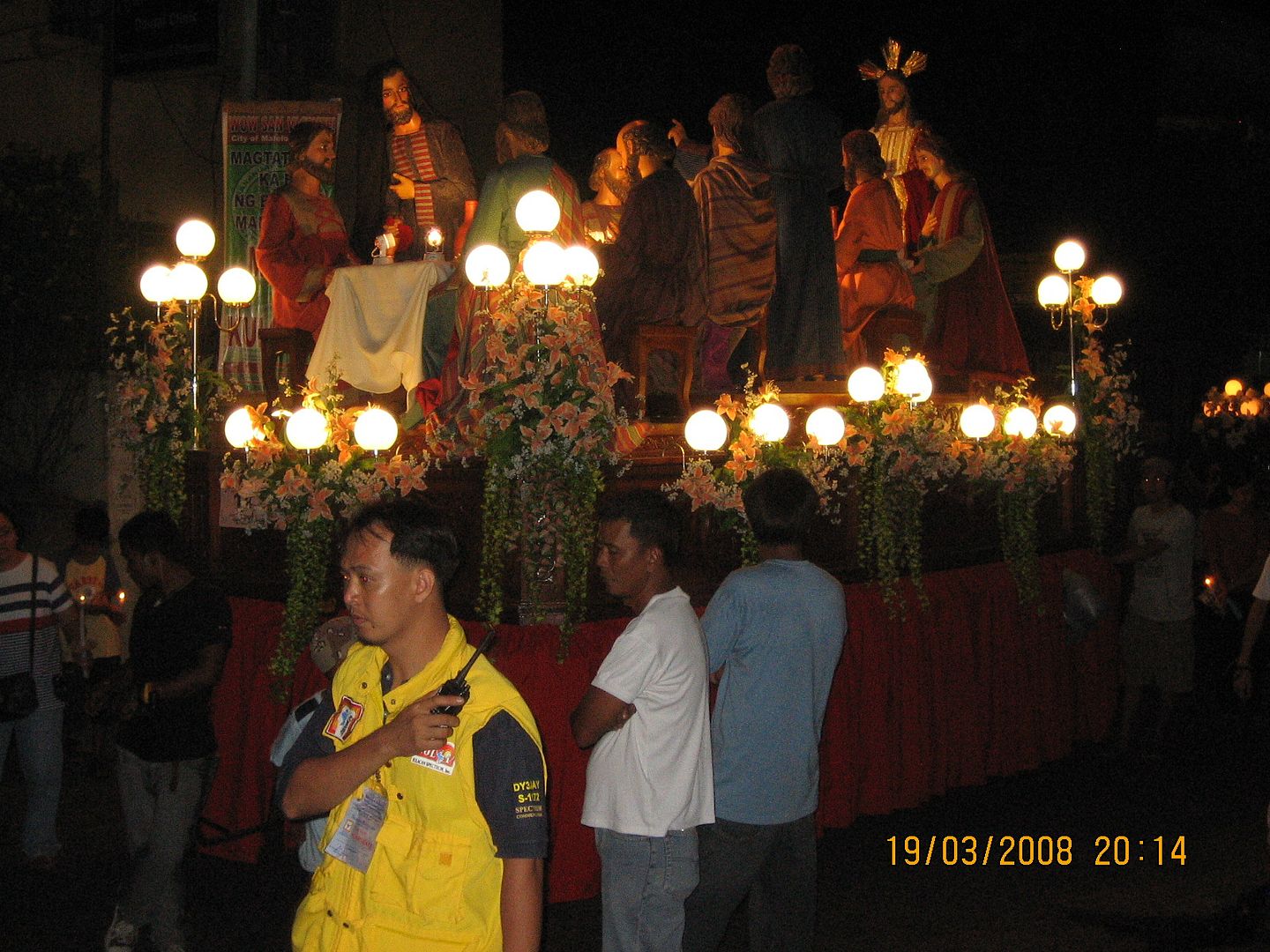
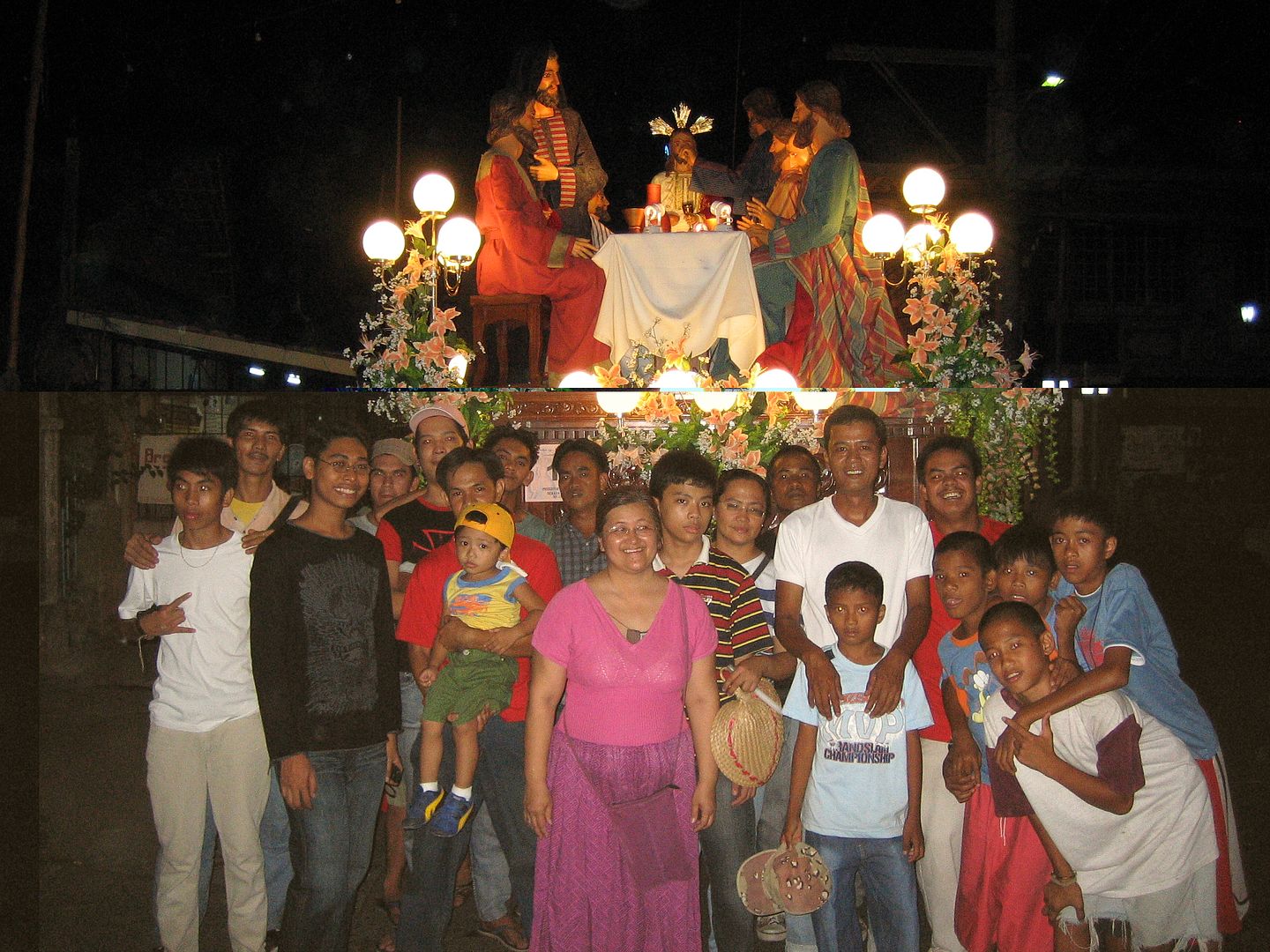
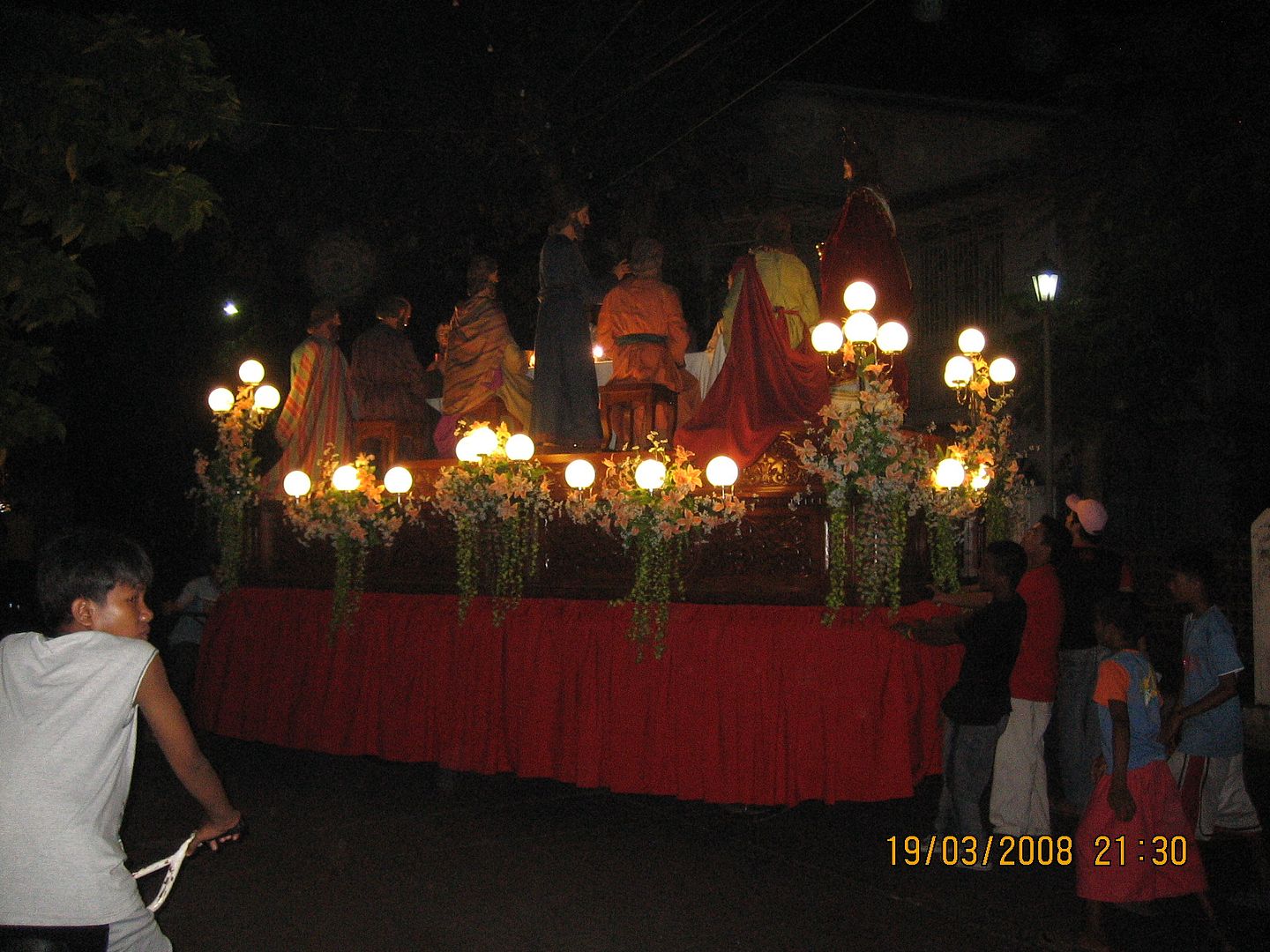

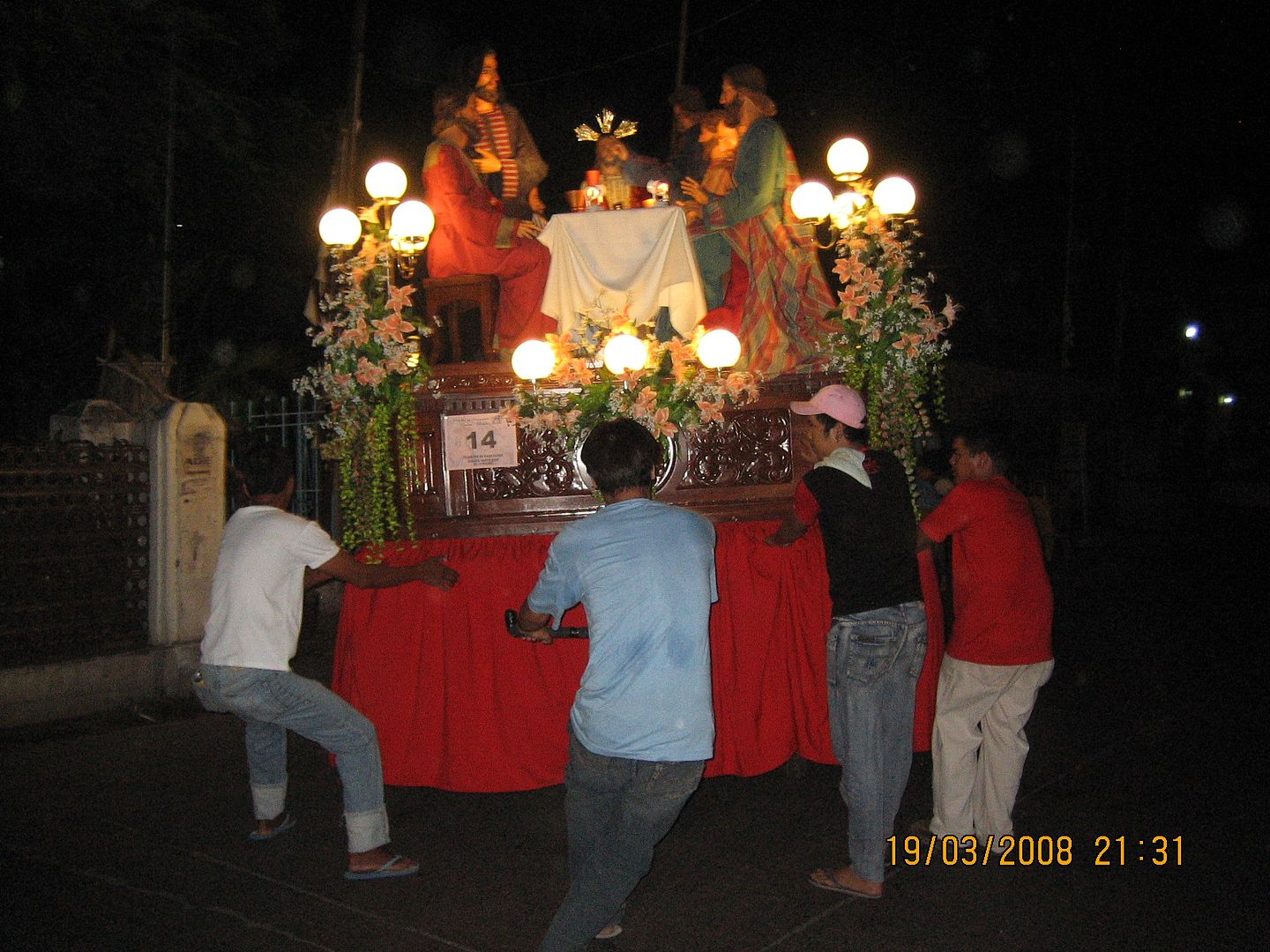

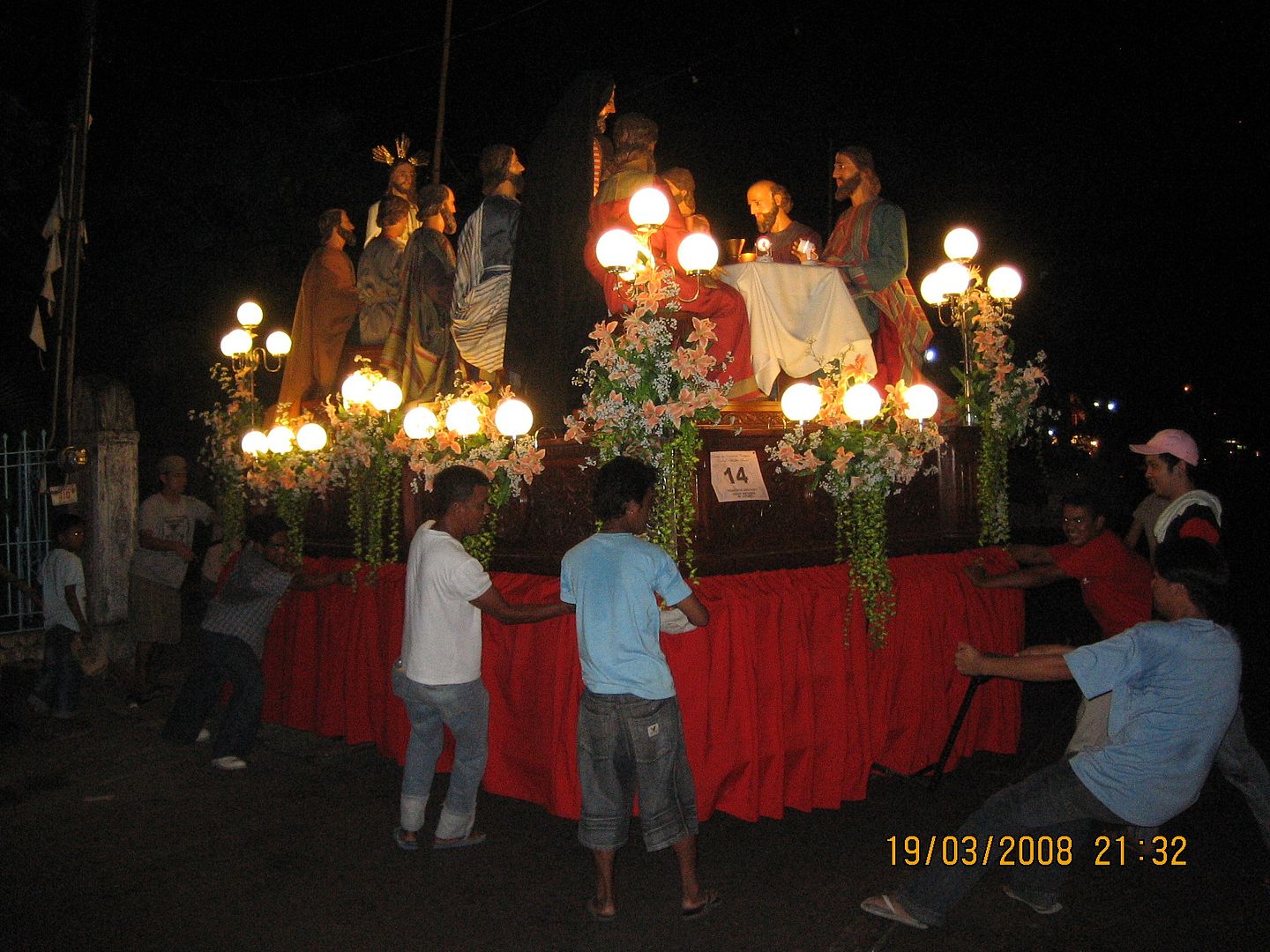
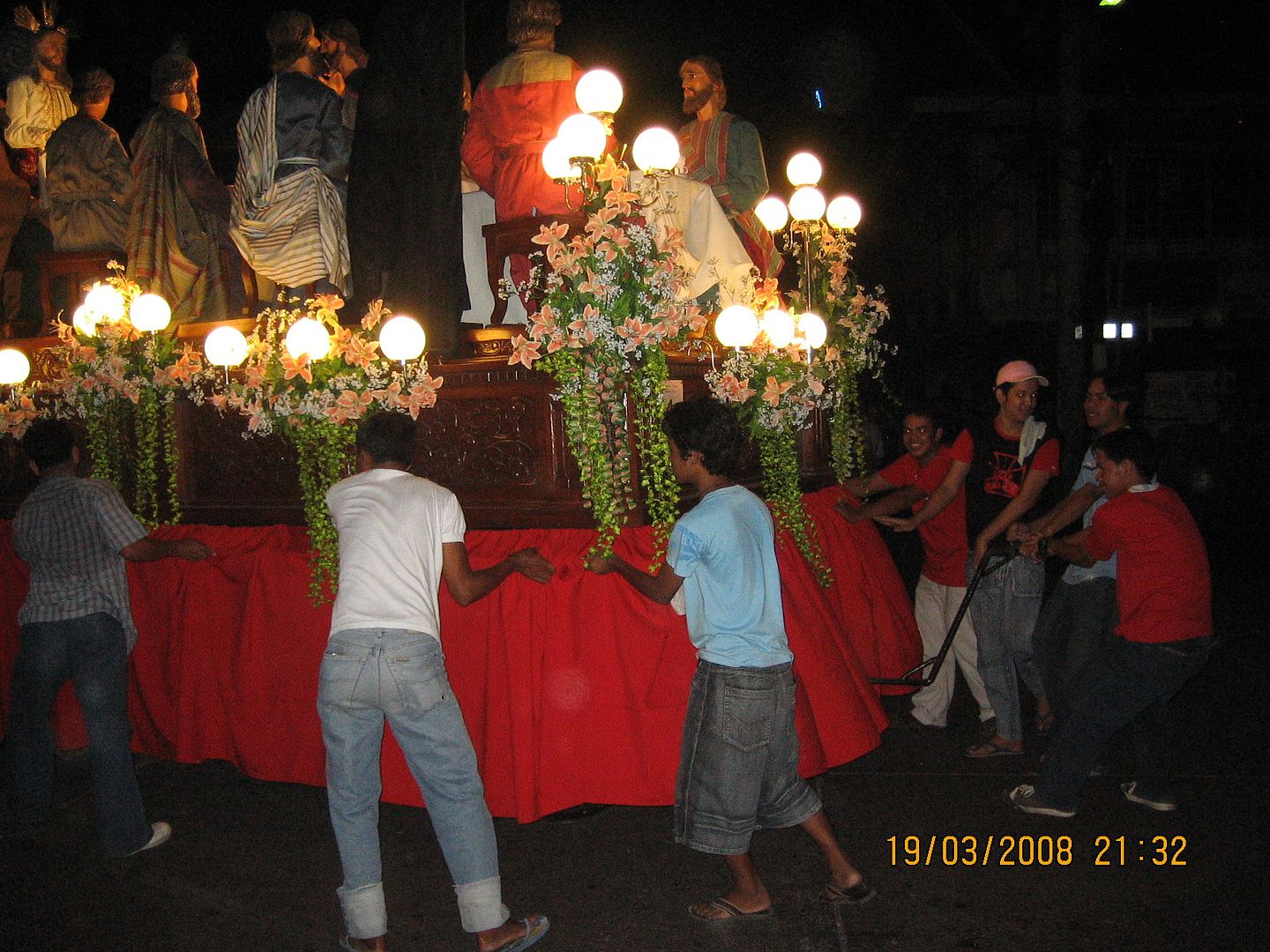
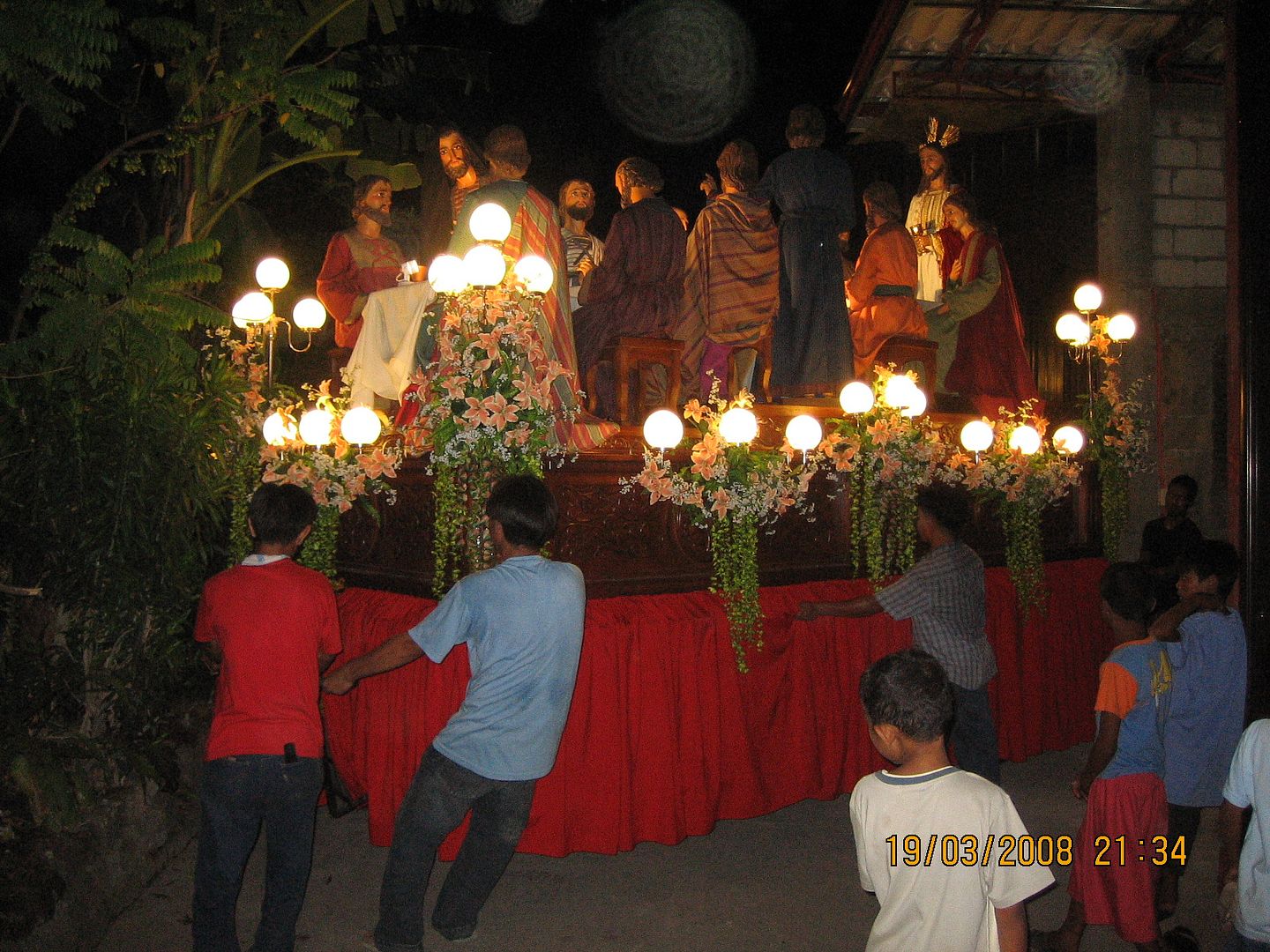

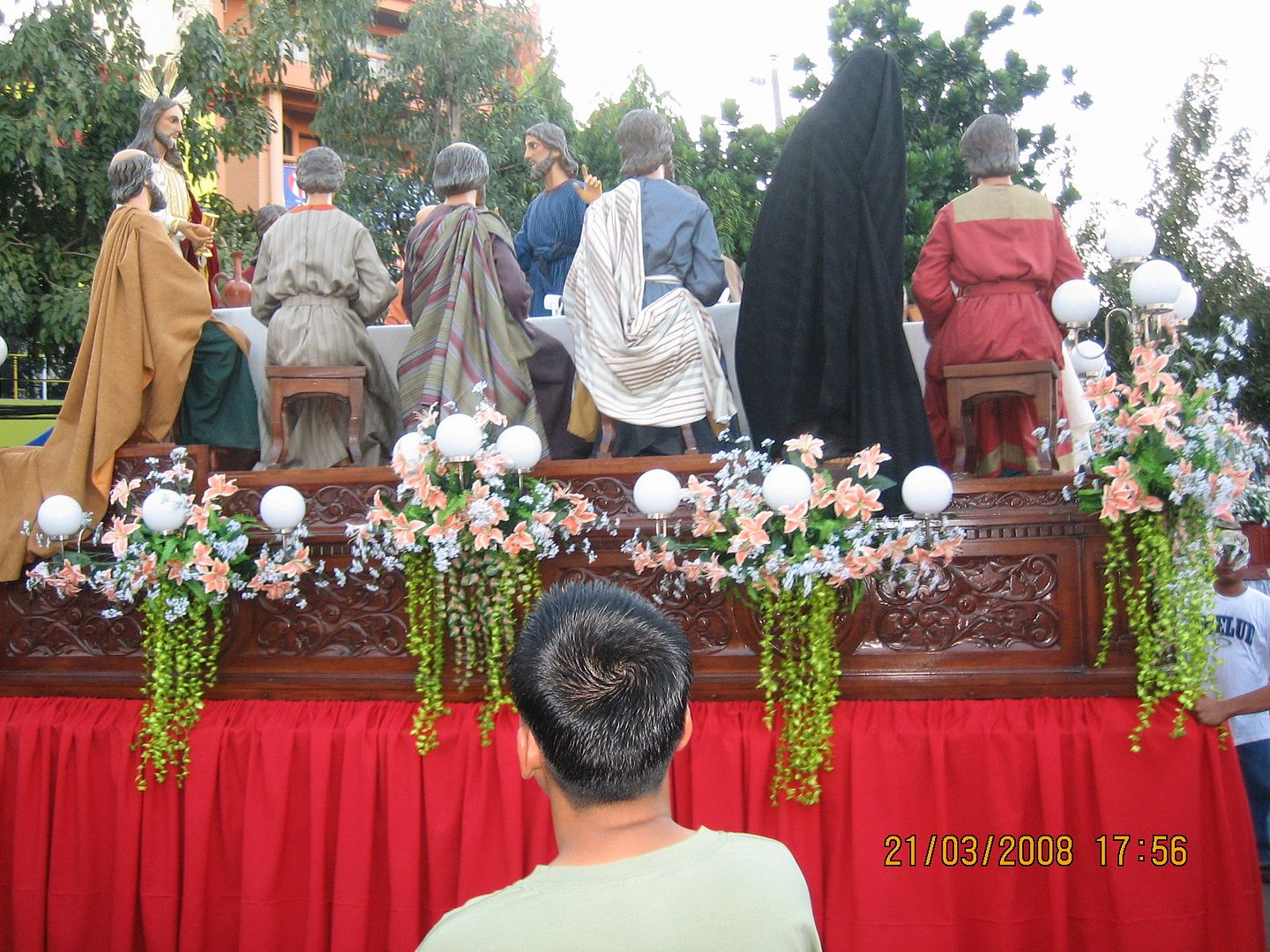

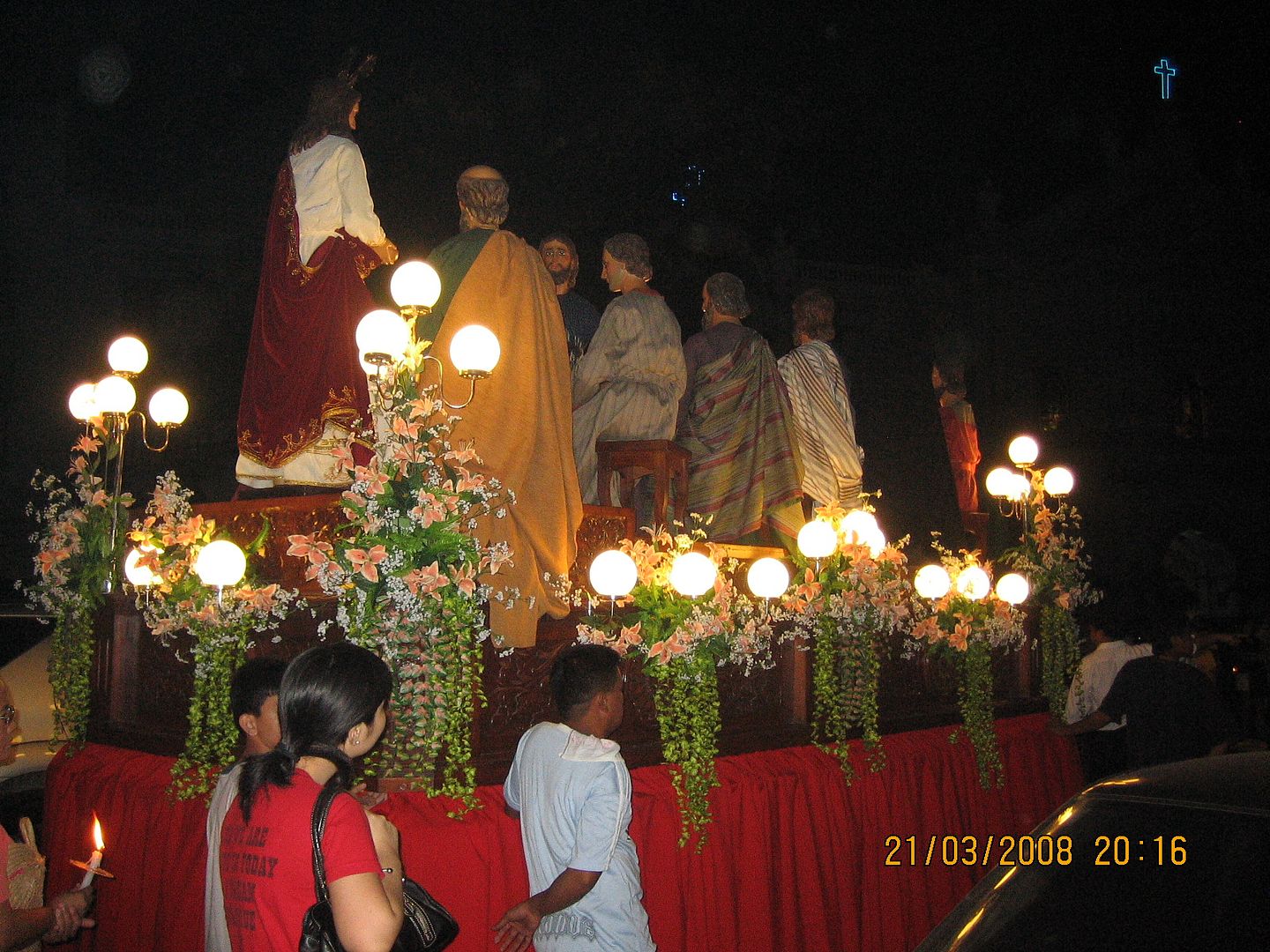

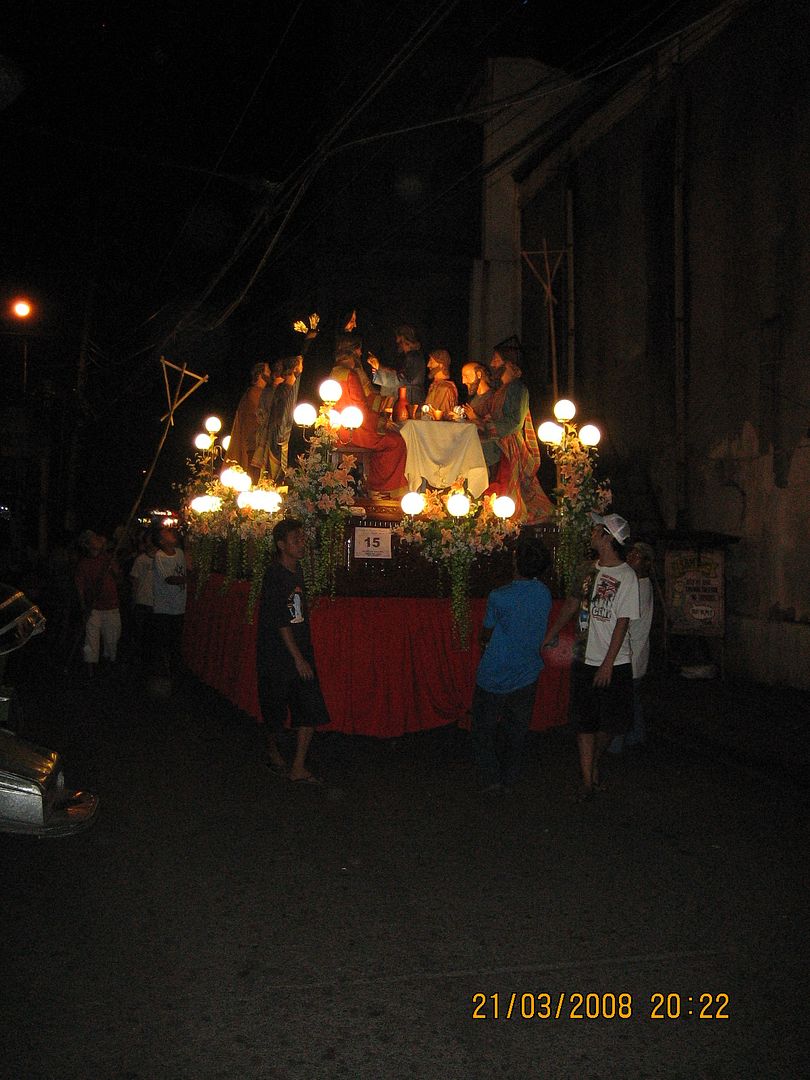




No comments:
Post a Comment